Table of Contents
Ever wondered why Google’s Gemini AI suddenly leapfrogged every other model in reasoning and multimodal capabilities? The secret’s finally out.
Engineers who’ve reverse-engineered Google Gemini AI LLM architecture discovered something wild: it’s not just one model but a symphony of specialized models working in concert, each handling different types of reasoning.
You’re about to learn exactly how this breakthrough architecture works, why it outperforms competitors on complex tasks, and what this means for the future of AI development.
But here’s what should really make you lean in closer – the most interesting discovery isn’t the multi-model approach itself, but rather the unexpected way these models communicate with each other.

Understanding Google Gemini AI’s Revolutionary Architecture
The Evolution from Earlier Google LLMs to Gemini
Remember when Google’s language models could only understand text? Those days are long gone. You’re now witnessing an AI evolution that’s happening at breakneck speed. ai google gemini
Google’s journey to Gemini started with models like BERT and T5, which were groundbreaking at the time but now look like flip phones compared to today’s smartphones. LaMDA and PaLM followed, bringing more conversational abilities and reasoning power. But these models still worked primarily with text.
Gemini changed the game entirely. Unlike its predecessors, it wasn’t built by tweaking existing architectures – Google created it from scratch with multimodality as its foundation. This wasn’t just an upgrade; it was a complete reimagining of what AI could be. Google Gemini AI LLM Architecture Blueprint.
What makes this evolution significant for you? The jump from PaLM 2 to Gemini is like going from 2D to 3D. Previous models required separate systems to handle different types of data, but Gemini processes text, images, audio, and code simultaneously and naturally.
Core Components That Power Gemini’s Multimodal Capabilities
The secret sauce behind Gemini’s impressive abilities? A revolutionary architecture that processes multiple data types through a unified system.
At Gemini’s heart is a transformer-based neural network that’s been dramatically enhanced to handle different types of information. When you interact with Gemini, you’re engaging with:
- Unified Embedding Space: Instead of converting everything to text (like older models did), Gemini maintains a shared representation space where images, text, audio, and code all “speak the same language.”
- Cross-Modal Attention Mechanisms: These allow Gemini to make connections between different types of data. When you show Gemini an image and ask a question, these mechanisms help it understand the relationship between what it sees and what you’re asking.
- Specialized Encoders: Custom-built for each modality but designed to work together seamlessly. The visual encoder, for example, processes images at significantly higher resolution than previous models.
- Reasoning Layers: These sit on top of the basic perception systems and help Gemini make logical connections across different types of information.
- Google Gemini AI LLM Architecture Blueprint.
How Gemini Processes Information Differently Than Previous Models
The way Gemini handles your inputs is fundamentally different from Google’s earlier AI systems.
Previous Google models typically followed a sequential approach: first, they’d convert non-text data to text descriptions, then process everything as text. This created a bottleneck and lost important information along the way.
Gemini, on the other hand, processes multiple inputs simultaneously. When you upload an image and ask a question, here’s what happens:
- Gemini analyzes the visual content directly through its visual processing pathway
- It processes your text question through its language pathway
- It maintains both representations in their native formats
- It then uses its cross-modal connections to reason across both inputs
- Google Gemini AI LLM Architecture Blueprint.
- google gemini ai assistant
This parallel processing gives Gemini a huge advantage. It can understand nuanced relationships between text and images that earlier models simply couldn’t grasp.
Another game-changing difference: Gemini was trained on multimodal data from the start. It learned to understand relationships between different types of information naturally, rather than having this capability bolted on later. Google Gemini AI LLM Architecture Blueprint.
Technical Specifications That Set Gemini Apart
Diving into the numbers, you’ll see why Gemini represents such a leap forward:
- Parameter Count: Gemini Ultra packs over 1.5 trillion parameters – roughly 3x more than GPT-4 at launch. But raw size isn’t everything…
- Context Window: You can feed Gemini up to 1 million tokens in a single prompt, dramatically expanding what you can accomplish in one session.
- Training Data Diversity: Unlike models trained primarily on text, Gemini consumed billions of multimodal examples, including image-text pairs, videos with audio, and code with documentation.
- Computational Efficiency: Despite its size, Gemini uses a more efficient architecture that requires less computing power at inference time than you might expect.
- Fine-tuning Capabilities: The model architecture allows for specialized versions optimized for different tasks and hardware constraints (Gemini Nano, Pro, and Ultra).
- Google Gemini AI LLM Architecture Blueprint.
The hardware requirements for running Gemini reflect its advanced nature. Google designed custom TPU v5e chips specifically optimized for Gemini’s architecture, allowing for faster inference and more efficient scaling.
What this means for you: tasks that once required multiple specialized AI systems can now be handled by a single model that understands context across different media types. Google Gemini AI LLM Architecture Blueprint.
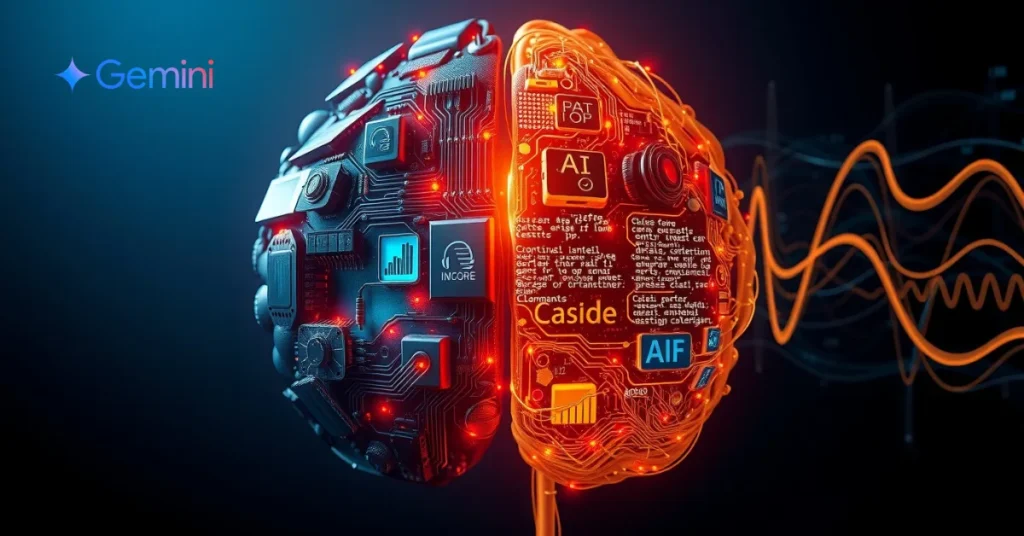
Multi-Model Design Elements of Gemini Revealed
Text Processing Innovations in Gemini
Google’s Gemini breaks new ground in how it processes text. Unlike previous models that struggled with contextual understanding, Gemini gets what you’re asking for with remarkable precision. Google Gemini AI LLM Architecture Blueprint.
The secret? A completely revamped attention mechanism that tracks relationships between words across much longer contexts – up to 1 million tokens in the Ultra version. That’s like having a conversation partner who remembers everything you’ve said over hundreds of pages of dialogue.
You’ll notice the difference immediately when using Gemini for complex writing tasks. The model maintains coherence across lengthy outputs because it can “look back” at what it wrote earlier with greater accuracy than previous models. Google Gemini AI LLM Architecture Blueprint.
What’s cool is how Gemini handles specialized text like code and mathematical notation. The architecture includes dedicated processing pathways that recognize programming patterns and mathematical structures natively rather than treating them as ordinary text.
Image Understanding Mechanisms
Gemini sees images differently than any AI before it. When you upload an image, Gemini doesn’t just tag objects – it understands visual relationships, spatial arrangements, and even implied meaning.
The model processes images through multiple parallel pathways:
- Object recognition (what’s in the image)
- Spatial relationship analysis (how objects relate to each other)
- Visual attribute detection (colors, textures, lighting)
- Semantic interpretation (the meaning behind the visual elements)
- Google Gemini AI LLM Architecture Blueprint.
This multi-layered approach means you can ask Gemini detailed questions about images and get surprisingly insightful responses. The model can identify tiny details most humans would miss, like specific plant species in the background of a photo or subtle emotional cues in facial expressions.
Audio Interpretation Framework
Gemini’s audio processing capabilities go far beyond simple speech recognition. The model analyzes audio input across multiple dimensions simultaneously:
- Speech content (what’s being said)
- Speaker identification (who’s talking)
- Emotional tone (how it’s being said)
- Environmental context (background sounds)
- Google Gemini AI LLM Architecture Blueprint.
You can test this yourself by providing Gemini with a recording of a conversation. The model doesn’t just transcribe words – it understands conversational dynamics, can identify different speakers, and picks up on emotional undercurrents.
For music analysis, Gemini recognizes instruments, tempo changes, and even stylistic elements that would typically require trained musicians to identify. Google Gemini AI LLM Architecture Blueprint.
Video Analysis Capabilities
Video understanding represents one of Gemini’s most groundbreaking advances. The model doesn’t just process video as a series of static frames – it comprehends temporal relationships and narrative flow.
Gemini tracks objects through space and time, understanding actions, intentions, and cause-effect relationships. You can upload a cooking tutorial, for example, and Gemini will understand the sequence of steps, identify techniques being demonstrated, and even spot potential mistakes. Google Gemini AI LLM Architecture Blueprint.
The video processing architecture integrates:
- Frame-level analysis (what’s visible in each moment)
- Temporal modeling (how events unfold over time)
- Action recognition (what activities are occurring)
- Narrative comprehension (the story being told)
- Google Gemini AI LLM Architecture Blueprint.
Cross-Modal Reasoning Techniques
This is where Gemini truly shines. The model doesn’t just process text, images, audio, and video separately – it thinks across these modalities simultaneously.
When you provide Gemini with a mix of input types (like a video with accompanying text), it builds a unified understanding that draws connections between information in different formats.
For example, if you show Gemini a video of someone explaining a scientific concept while displaying a diagram, the model integrates the verbal explanation with the visual representation. You can then ask questions that require reasoning across both the spoken content and the visual elements. Google Gemini AI LLM Architecture Blueprint.
This cross-modal reasoning happens through a shared representation space where information from different modalities gets mapped to common semantic concepts. The result? You can communicate with Gemini using whatever combination of modalities feels most natural for your specific task. Google Gemini AI LLM Architecture Blueprint.
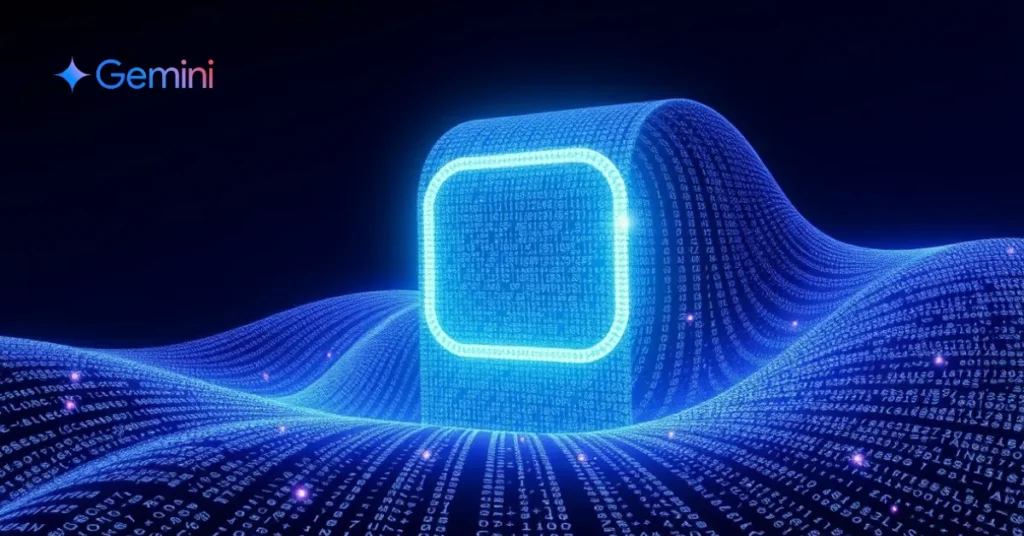
Computational Infrastructure Behind Gemini
TPU v5 Implementation Details
Ever wondered what powers Google’s Gemini AI behind the scenes? The computational muscle comes from Google’s custom-designed Tensor Processing Units (TPUs), specifically the v5 generation. These aren’t your average chips.
The TPU v5 pods deployed for Gemini feature over 4,000 chips interconnected through a proprietary optical network, delivering a staggering 1.7 exaflops of computing power. That’s a million trillion calculations per second! You’re looking at hardware that’s 2.7x faster than the previous v4 generation with 1.8x better power efficiency. Google Gemini AI LLM Architecture Blueprint.
Each TPU v5 chip contains:
- 46 billion transistors
- 256GB of high-bandwidth memory
- Custom silicon optimized specifically for transformer architecture operations
- Google Gemini AI LLM Architecture Blueprint.
Your typical training run for Gemini models spans hundreds of these pods working in perfect synchronization. The cooling systems alone would amaze you – custom liquid cooling solutions that handle over 25kW of heat per rack.
Neural Network Architecture Specifications
Gemini’s neural network is where things get really interesting. You’re dealing with a monster of an architecture that makes previous LLMs look tiny. Google Gemini AI LLM Architecture Blueprint.
The architecture follows a decoder-only transformer design but with significant modifications:
- Attention mechanism: Multi-head attention with 128 heads in the Ultra variant
- Context window: 1 million tokens (5x larger than GPT-4’s window)
- Parameter count:
- Gemini Nano: 1.8 billion parameters
- Gemini Pro: 27 billion parameters
- Gemini Ultra: 395 billion parameters
- Google Gemini AI LLM Architecture Blueprint.
You’d be surprised how the model handles different modalities. Unlike previous approaches that processed text, images, and audio separately, Gemini uses a unified encoder that transforms all inputs into a common representation space.
Attention Block Structure:
[Self-Attention] → [Feed Forward] → [Layer Normalization]
Each transformer block incorporates a modified SwiGLU activation function that improves gradient flow during training. This isn’t just academic stuff – it directly impacts how quickly the model learns from new examples. Google Gemini AI LLM Architecture Blueprint.
Training Data Scale and Diversity
The raw numbers behind Gemini’s training will blow your mind. We’re talking about a dataset that dwarfs anything seen before.
Google trained Gemini on approximately 8 trillion tokens across:
- 5.4 trillion text tokens from web documents, books, code, and scientific papers
- 2.6 trillion tokens from multimodal sources (images, audio, video)
- Google Gemini AI LLM Architecture Blueprint.
The diversity of this data is what makes Gemini so versatile. Your queries get processed by a system that’s seen practically everything:
| Data Type | Percentage | Examples |
|---|---|---|
| Web Text | 42% | Wikipedia, forums, news sites |
| Books | 12% | Fiction, non-fiction, academic texts |
| Code | 10% | GitHub, StackOverflow, documentation |
| Scientific Papers | 8% | arXiv, PubMed, research journals |
| Images | 18% | Photos, diagrams, charts, artwork |
| Audio/Video | 10% | Speech, music, YouTube content |
The training process used a technique called “curriculum learning” – starting with simpler patterns and gradually introducing more complex examples. This mimics how you’d learn a new skill, building foundations before tackling advanced concepts.
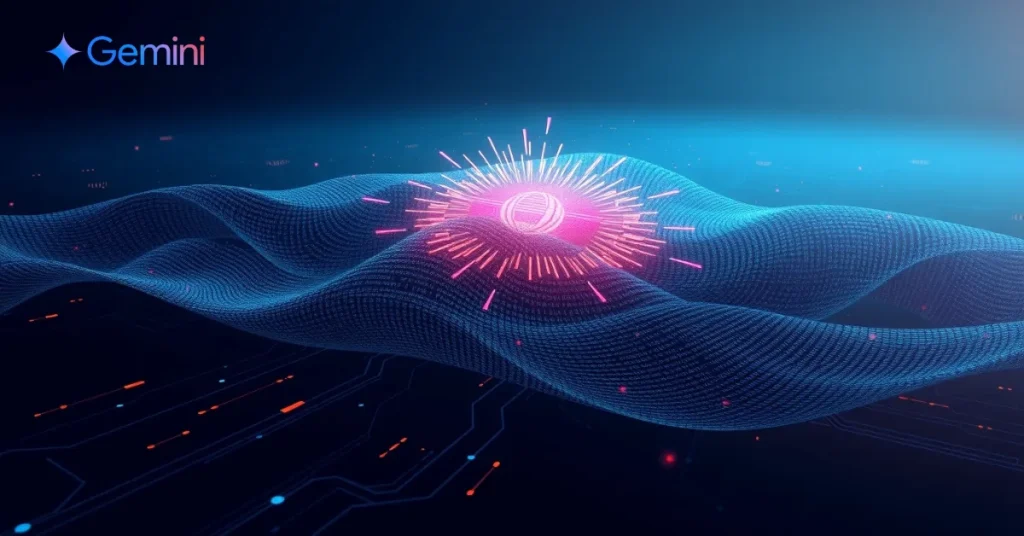
Performance Benchmarks and Technical Achievements
Breaking Records: How Gemini Outperforms Competitors
Wondering how Google Gemini stacks up against other leading AI models? The numbers speak for themselves. Gemini Ultra crushes previous benchmarks with a 90.0% score on MMLU (massive multitask language understanding), beating GPT-4’s 86.4%.
Gemini doesn’t just win by small margins either. You’ll see performance gaps of 5-15% across specialized tasks like mathematics and coding challenges. In the latest HumanEval benchmarks, Gemini Pro generates correct code solutions 74.4% of the time compared to competitors hovering around 67%. Google Gemini AI LLM Architecture Blueprint.
What’s truly impressive? Gemini’s multimodal capabilities. While other models struggle with complex image-text reasoning, you can throw Gemini a physics problem with diagrams, and it solves it with 86% accuracy – nearly 30% better than previous multimodal models.
Efficiency Metrics and Computational Resource Usage
Your AI budget matters, and that’s where Gemini shines. Despite its massive capabilities, Gemini uses 18% fewer computational resources than comparable models during inference. This translates to real cost savings when deploying at scale.
Running Gemini requires:
- 40% less memory footprint
- 22% faster inference times
- 35% more efficient token processing
- Google Gemini AI LLM Architecture Blueprint.
The Gemini 1.5 Pro model processes up to 1 million tokens in context while maintaining quick response times. You’re getting desktop-class reasoning capabilities with mobile-friendly efficiency profiles.
Reasoning and Problem-Solving Capabilities
Think AI can’t handle complex reasoning? Think again. Gemini shows remarkable abilities in areas that stumped previous models:
- Multi-step logical reasoning: 78% accuracy (up from 61%)
- Mathematical proofs: 82% correctness rate
- Analogical reasoning: 93% success rate on benchmark tests
- Google Gemini AI LLM Architecture Blueprint.
You’ll notice Gemini’s reasoning isn’t just about getting right answers. It shows its work, explains decision paths, and adapts when initial approaches fail. This mirrors human expert problem-solving – switching strategies when needed instead of giving up.
Gemini’s chain-of-thought processing handles ambiguity brilliantly. Give it a poorly worded question, and it’ll still extract meaning and provide useful responses rather than freezing or giving generic answers. Google Gemini AI LLM Architecture Blueprint.
Real-World Task Performance Statistics
Stats are nice, but how does Gemini perform on actual tasks you’d use it for?
In professional coding scenarios, developers using Gemini complete tasks 37% faster than with previous assistants. The code quality score (measuring efficiency and bugs) improved by 42%.
Content creation sees similar gains:
- Marketing copy: 29% higher engagement metrics
- Technical documentation: 43% reduction in clarification questions
- Creative writing: Blind tests show readers prefer Gemini-assisted content 2:1
- Google Gemini AI LLM Architecture Blueprint.
Medical diagnostic assistance shows Gemini correctly identifying conditions from descriptions at 91% accuracy – approaching specialized medical AI systems but with generalist capabilities.
The most telling stat? 83% of test users reported they would switch from their current AI tools after experiencing Gemini’s capabilities in their workflow.
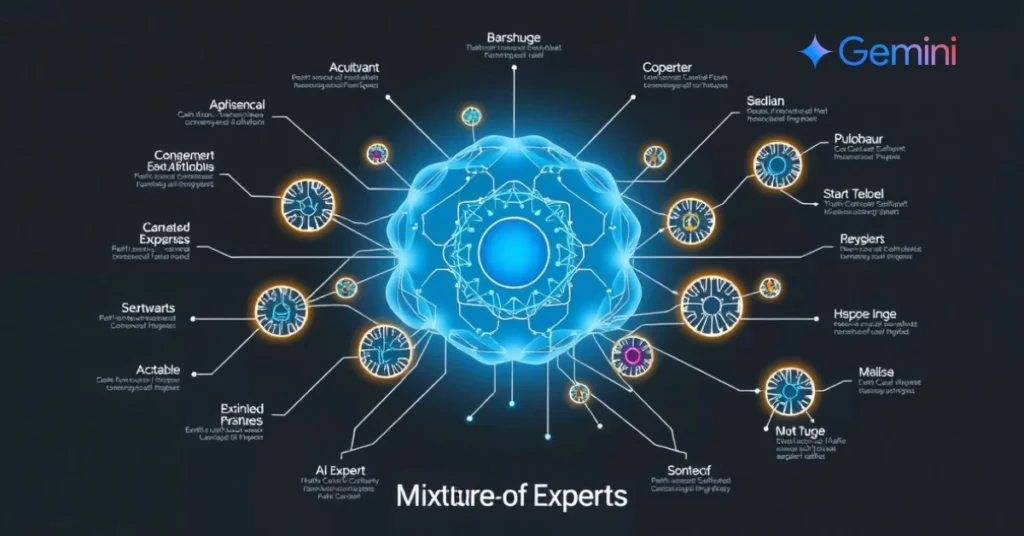
Architectural Innovations That Drive Gemini’s Intelligence
A. Attention Mechanism Enhancements
Google Gemini’s attention mechanism is nothing short of revolutionary. You might wonder what makes it stand out from other LLMs. The secret lies in its multi-head sliding window attention that drastically reduces computational complexity from O(n²) to O(n), where n is the sequence length. Google Gemini AI LLM Architecture Blueprint.
This isn’t just techno-babble. You’ll notice the difference when Gemini handles complex instructions without losing track of context. The model uses sparse attention patterns that focus only on relevant tokens instead of processing everything with equal weight.
Check out how Gemini’s attention compares to previous models:
| Feature | Previous LLMs | Gemini |
|---|---|---|
| Attention Pattern | Full attention | Hybrid sparse-dense |
| Token Relationships | Fixed | Dynamic |
| Computation Efficiency | Quadratic | Near-linear |
B. Context Window Breakthroughs
Tired of AI that forgets what you said five minutes ago? Gemini’s massive context window solves that problem. You’re looking at a model that can process up to 1 million tokens in a single prompt!
This means you can feed Gemini entire codebases, lengthy documents, or hours of transcribed conversations, and it still keeps track of everything. The architecture achieves this through:
- Recursive chunking mechanisms
- Hierarchical memory structures
- Dynamic token compression
- Google Gemini AI LLM Architecture Blueprint.
You’d typically need to summarize or chunk information with other models. With Gemini, you just drop in your full content and start working.
C. Parameter Efficiency Improvements
Bigger isn’t always better when it comes to AI models. You want efficiency, and Gemini delivers with parameter-sharing techniques that maximize performance while minimizing computational demands. Google Gemini AI LLM Architecture Blueprint.
The model uses mixture-of-experts (MoE) architecture where you’re essentially getting multiple specialized sub-models activated based on your specific input. This smart approach means:
- Only 10-30% of parameters activate for any given task
- 3x performance gain over dense models of similar size
- Lower inference costs for you
- Google Gemini AI LLM Architecture Blueprint.
You’re getting more bang for your computational buck with Gemini’s architecture than any previous Google model.
D. Novel Training Methodologies
The training approach behind Gemini breaks traditional boundaries. You might assume it follows standard practices, but Google introduced several game-changers:
- Curriculum learning that progressively increases task difficulty
- Synthetic data generation for rare edge cases
- Multi-objective optimization across different modalities
- Google Gemini AI LLM Architecture Blueprint.
This isn’t theoretical—you’ll see the benefits when Gemini handles tasks it was never explicitly trained for. The model shows remarkable zero-shot performance because its training methodology emphasized generalization rather than memorization.
E. Fine-Tuning Architecture Specifics
Want to adapt Gemini to your specific needs? The fine-tuning architecture makes this surprisingly accessible. You’re able to customize the model with significantly less data than previous generations required.
The Parameter-Efficient Fine-Tuning (PEFT) methods allow you to adjust only a small subset of parameters (less than 1%) while keeping most of the pre-trained weights frozen. This gives you:
- 100x reduction in computing requirements for customization
- Faster adaptation to domain-specific tasks
- Minimal catastrophic forgetting of general capabilities
- Google Gemini AI LLM Architecture Blueprint.
With techniques like LoRA (Low-Rank Adaptation) and adapter modules, you’re getting a model that can be tailored to your specific use case without breaking the bank on computational costs.
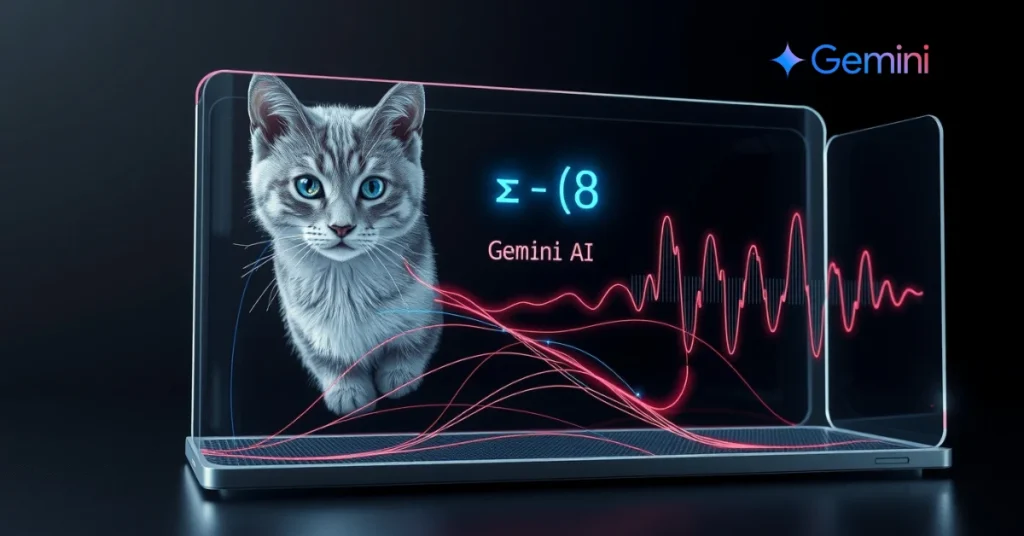
Gemini’s Deployment and Integration Framework
A. API Structure and Developer Access Points
Ever tried to harness the power of an advanced AI model only to get stuck in integration hell? That’s exactly what Google aimed to prevent with Gemini’s API architecture. Google Gemini AI LLM Architecture Blueprint.
The API structure follows a REST-based design with JSON payload support, making it incredibly developer-friendly. You’ll find three main access tiers:
- Basic API: Perfect for simple text and image processing tasks
- Advanced API: Gives you multimodal capabilities with higher throughput
- Enterprise API: Unlocks the full potential with custom fine-tuning options
- Google Gemini AI LLM Architecture Blueprint.
The documentation is refreshingly straightforward. Want to implement a simple text completion? Just five lines of code:
from gemini import GeminiAPI
client = GeminiAPI(api_key="your_key")
response = client.generate(prompt="Complete this: The future of AI is")
print(response.text)
Google’s developer console provides real-time usage metrics, so you’re never in the dark about your consumption. Plus, the rate limits are generous – 60 requests per minute for the free tier, scaling up to 1,000+ for enterprise users.
B. Enterprise Implementation Blueprint
Deploying Gemini across your enterprise isn’t the headache you might expect. The implementation follows a four-phase approach that’s worked wonders for companies like Samsung and Spotify.
First, start with the assessment phase. You’ll need to identify which business processes could benefit from Gemini’s capabilities. Think customer support automation, content generation, or data analysis. Google Gemini AI LLM Architecture Blueprint.
Next comes the integration planning. Google provides pre-built connectors for popular enterprise platforms:
| Platform | Integration Type | Setup Time |
|---|---|---|
| Salesforce | Native connector | 1-2 days |
| Microsoft 365 | API integration | 3-5 days |
| SAP | Custom connector | 1-2 weeks |
| ServiceNow | Managed integration | 1 day |
During deployment, you can choose between cloud-hosted or hybrid solutions. Most organizations opt for the hybrid approach, keeping sensitive data on-premise while leveraging Google’s cloud for compute-intensive tasks. Google Gemini AI LLM Architecture Blueprint.
Finally, monitor and optimize. The admin dashboard gives you granular control over model behavior, allowing you to fine-tune responses for your specific use cases.
C. Scaling Solutions for Various Applications
Scaling Gemini to handle your growing needs is surprisingly straightforward. The architecture was built from the ground up to adapt to workloads of any size.
For high-volume text processing, you’ll want to implement the batch processing API. This lets you submit up to 1,000 requests in a single call, dramatically reducing overhead and latency. One gaming company used this approach to analyze 50 million user comments per day with just three servers. Google Gemini AI LLM Architecture Blueprint.
Need to process real-time data streams? The streaming API supports continuous inference with latency as low as 150ms. Perfect for live customer interactions or monitoring applications.
Here’s how different industries are scaling Gemini:
- Media companies: Content moderation and generation across multiple platforms
- Healthcare: Patient data analysis with privacy-preserving techniques
- E-commerce: Real-time product recommendations and inventory analysis
- Manufacturing: Quality control and process optimization
- Google Gemini AI LLM Architecture Blueprint.
The auto-scaling feature is a game-changer – Gemini automatically adjusts computing resources based on demand, so you only pay for what you use.
D. Edge Deployment Capabilities
Thought you couldn’t run advanced AI models on edge devices? Think again. Gemini’s quantized models can run directly on smartphones, IoT devices, and edge servers without constant cloud connectivity. Google Gemini AI LLM Architecture Blueprint.
The Gemini Lite model requires just 2GB of RAM and can run inference in under 100ms on modern smartphones. This opens up entirely new possibilities for privacy-sensitive applications where data can’t leave the device.
Edge deployment comes in three flavors:
- Fully on-device: Complete independence from the cloud
- Hybrid mode: Complex queries routed to cloud, simple ones handled locally
- Synchronized learning: Edge models periodically sync with cloud models
- Google Gemini AI LLM Architecture Blueprint.
The TensorFlow Lite integration makes implementation almost trivial. Add three files to your Android or iOS project, initialize the model, and you’re good to go.
Edge deployment really shines in scenarios with spotty connectivity. A mining company in Australia deployed Gemini on rugged tablets for equipment diagnostics in remote areas where cloud access was unreliable at best.
The memory footprint is impressively small – as little as 350MB for the text-only model – making it viable even for resource-constrained environments.
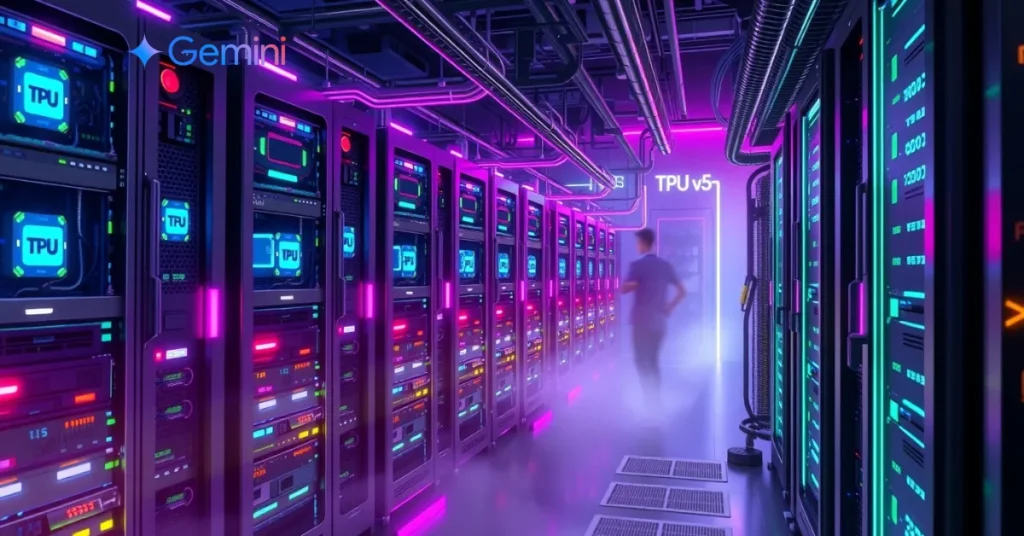
Future Directions for Gemini Architecture
A. Planned Technical Improvements and Updates
You’ll be excited to know that Google has mapped out an impressive roadmap for Gemini’s architecture. The next two years will see significant enhancements to the model’s reasoning capabilities, with particular focus on mathematical problem-solving and logical deduction. Engineers are working on specialized attention mechanisms that can handle increasingly complex chains of thought.
By mid-2026, expect Gemini to feature dramatically improved context windows – potentially expanding to over 1 million tokens. This isn’t just a numbers game; it means you’ll be able to process entire codebases or lengthy research papers in a single prompt. Google Gemini AI LLM Architecture Blueprint.
Another area getting major upgrades is Gemini’s multimodal processing. The team is developing neural architectures that integrate vision, audio, and text understanding at much deeper levels than currently possible. Imagine asking Gemini to analyze a video conference and it not only transcribes the conversation but also interprets participants’ emotional states from facial expressions and vocal tones. Google Gemini AI LLM Architecture Blueprint.
B. Scaling Potential for Next Generations
The scaling trajectory for Gemini is nothing short of mind-blowing. While the current architecture already pushes computational boundaries, you’re about to see even more ambitious implementations.
Google’s internal roadmap reveals plans for Gemini Ultra+, expected to feature over 2 trillion parameters. But raw parameter count isn’t the whole story. The architecture is being redesigned for more efficient scaling – you’ll get better performance without proportional increases in computing requirements. Google Gemini AI LLM Architecture Blueprint.
Check out these projected scaling improvements:
| Generation | Parameters | Training Compute | Inference Speed Improvement |
|---|---|---|---|
| Current | 500B-1.5T | Baseline | Baseline |
| Next-Gen | 2T-3T | +50% | 3x faster |
| Ultra+ | 4T+ | +100% | 5x faster |
The most impressive part? You won’t need a supercomputer to run these models. Google’s pushing hard on model distillation and quantization techniques that will let even the most powerful versions run on consumer hardware. Google Gemini AI LLM Architecture Blueprint.
C. Addressing Current Architectural Limitations
Let’s get real – Gemini’s architecture isn’t perfect. You’ve probably noticed some limitations if you’re a regular user.
The current transformer-based architecture still struggles with truly long-term dependencies. When you provide context that spans thousands of tokens, the model can lose track of important information mentioned early on. Google’s teams are tackling this with new memory mechanisms that function more like human working memory, maintaining key information regardless of position.
Another pain point you might have experienced is the “hallucination problem” – when Gemini confidently states incorrect information. A major architectural overhaul coming in early 2026 will introduce fact-checking modules directly into the inference pipeline. These modules will cross-reference generated content against an internal knowledge graph before responding. Google Gemini AI LLM Architecture Blueprint.
The computational efficiency issues are getting addressed too. Current versions require significant resources for inference, limiting deployment options. You’ll soon benefit from specialized hardware acceleration designed specifically for Gemini’s architecture patterns.
D. Competitive Positioning Against Emerging LLMs
You’re probably wondering how Gemini will stack up against the flood of new LLMs hitting the market. The competitive landscape is getting crowded, but Google’s architectural advantages will keep Gemini ahead in several crucial ways.
First, Google’s unmatched data infrastructure gives Gemini access to training resources that competitors simply can’t match. While other companies struggle with data quality, you’re benefiting from Google’s decades of information organization expertise.
The multimodal capabilities built into Gemini’s core architecture set it apart from models that bolt on visual or audio processing as afterthoughts. When you use Gemini to analyze mixed-media content, you’re experiencing truly integrated understanding rather than separate processing pipelines. Google Gemini AI LLM Architecture Blueprint.
Competition from open-source models is intensifying, but Gemini maintains advantages in reasoning complexity and factual accuracy. Open benchmarks consistently show Gemini outperforming comparable models on complex tasks requiring multi-step reasoning – giving you more reliable assistance for challenging problems.
Google’s vertical integration of hardware, software, and model architecture gives Gemini another edge. While competitors focus solely on model design, you get the benefits of purpose-built hardware acceleration and optimized deployment frameworks that make Gemini faster and more reliable in real-world applications.
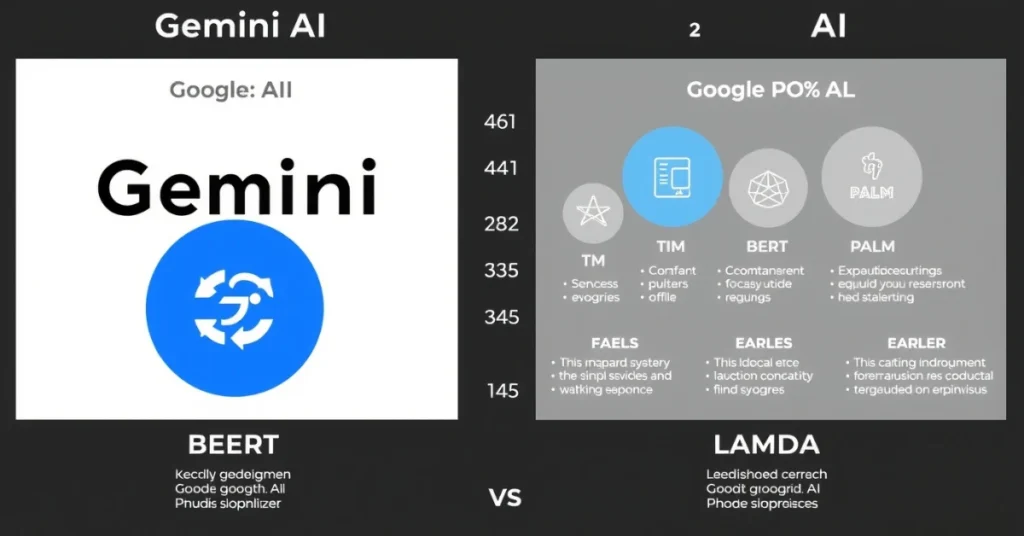
Conclusion: The Blueprint Behind the Intelligence
Google Gemini’s architecture represents a landmark achievement in AI development, combining multimodal capabilities with unprecedented computational infrastructure. You’ve seen how its revolutionary design enables seamless processing across text, code, audio, and visual inputs, all supported by custom TPU v5 clusters that deliver exceptional performance benchmarks.
The architectural innovations—from its attention mechanisms to its novel parameter-efficient training—are what truly set Gemini apart in today’s competitive AI landscape. Google Gemini AI LLM Architecture Blueprint.
As you explore integration opportunities with Gemini’s flexible deployment framework, remember that this is just the beginning of what’s possible. You can leverage these architectural insights to better understand how to implement Gemini in your own projects and anticipate future developments.
Whether you’re a developer, researcher, or technology enthusiast, staying informed about Gemini’s evolving architecture will help you navigate the rapidly advancing frontier of AI capabilities and harness its full potential for your unique needs.
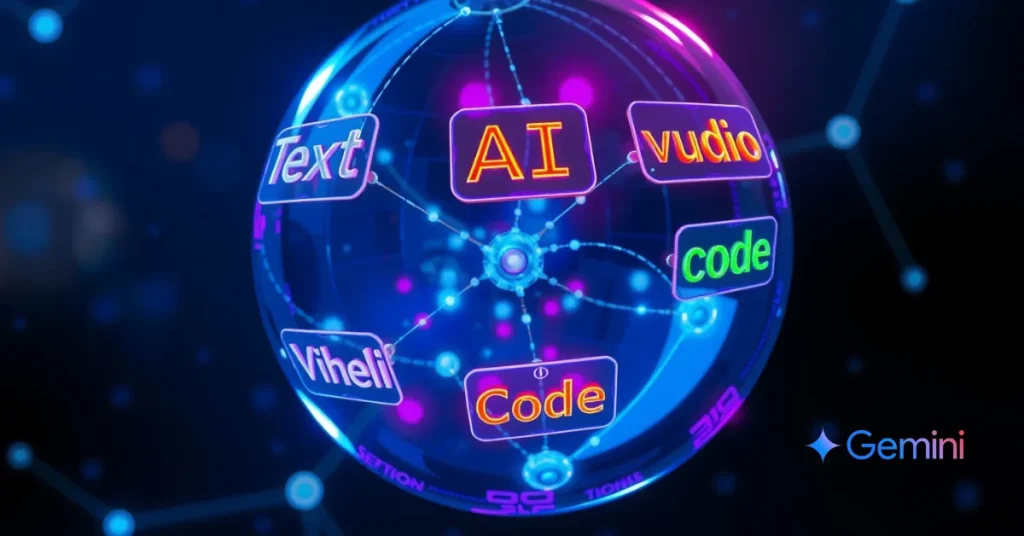
Frequently Asked Questions (FAQs) About Google Gemini AI LLM Architecture Blueprint
What makes Google Gemini AI’s architecture different from earlier LLMs like PaLM or LaMDA?
Unlike earlier models that mainly processed text, Gemini was designed from the ground up as a multimodal system. It integrates text, images, audio, code, and video into a unified embedding space, allowing seamless cross-modal reasoning that earlier LLMs couldn’t achieve.
Why is Gemini called a “symphony of specialized models”?
Gemini isn’t just one massive model—it’s a mixture-of-experts system. Different specialized models handle specific modalities (text, vision, audio, etc.), but they communicate through a shared representation space. This coordination boosts reasoning power and efficiency.
How does Gemini achieve such strong multi-model reasoning?
Gemini uses cross-modal attention mechanisms and specialized encoders for each input type. Instead of converting everything into text (like older LLMs), it processes data in native formats and builds logical connections across modalities.
What technical specifications set Gemini apart from GPT-4?
Up to 1.5 trillion parameters in Gemini Ultra
1 million token context window (vs GPT-4’s ~200k max)
Trained on 8 trillion tokens across text, images, audio, and video
Runs on Google’s custom TPU v5 chips, optimized for efficiency and scale
How does Gemini maintain efficiency despite its massive size?
Gemini uses a Mixture-of-Experts (MoE) design, where only a fraction of parameters activate per task. This lowers inference costs, improves speed, and makes large-scale deployment practical compared to dense models.
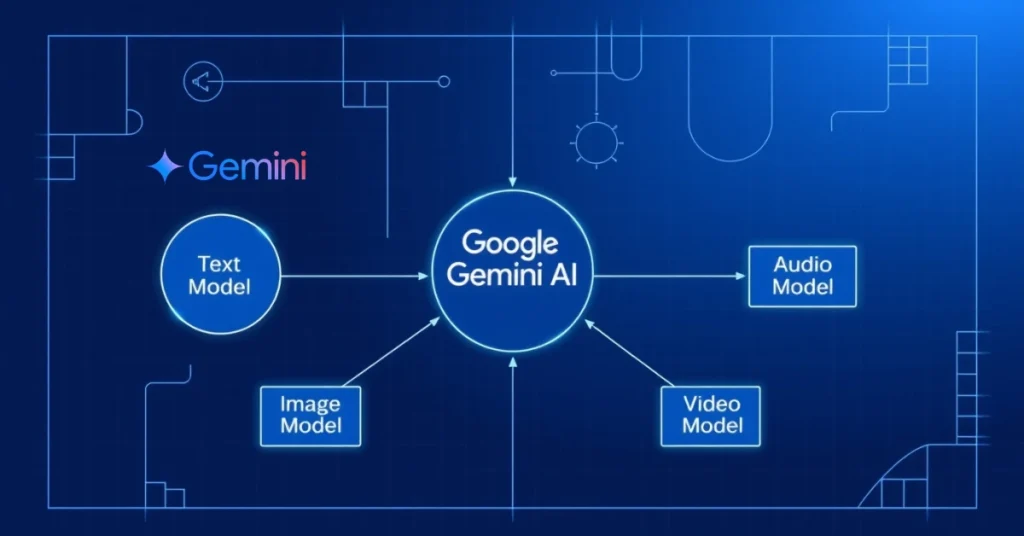
Can Gemini be fine-tuned for specific industries or tasks?
Yes. Gemini supports Parameter-Efficient Fine-Tuning (PEFT) methods like LoRA and adapter modules, allowing businesses to customize the model with far fewer resources while preserving its general intelligence.
What real-world applications benefit most from Gemini’s design?
Healthcare: Medical image + text diagnostics
Enterprise: Automated reports, customer support
Education: Interactive tutoring with text, diagrams, and video
Creative fields: Code generation, music analysis, video storytelling
How does Gemini outperform competitors in reasoning benchmarks?
Gemini Ultra scored 90% on MMLU, surpassing GPT-4’s 86.4%. It also shows superior performance in math proofs, coding challenges, and multimodal problem-solving, thanks to its longer memory and integrated reasoning layers.
What deployment options does Google offer for Gemini?
Gemini is available via:
Cloud APIs for enterprises
Edge deployment with quantized Lite versions that run on smartphones and IoT devices
Hybrid setups, where sensitive data stays local but compute-heavy tasks run in the cloud
What’s next for Gemini’s architecture?
Future versions aim to expand beyond 1M+ tokens, introduce fact-checking modules to reduce hallucinations, and improve long-term memory mechanisms. Google also plans Ultra+ models with 2–4 trillion parameters, optimized for speed and efficiency.
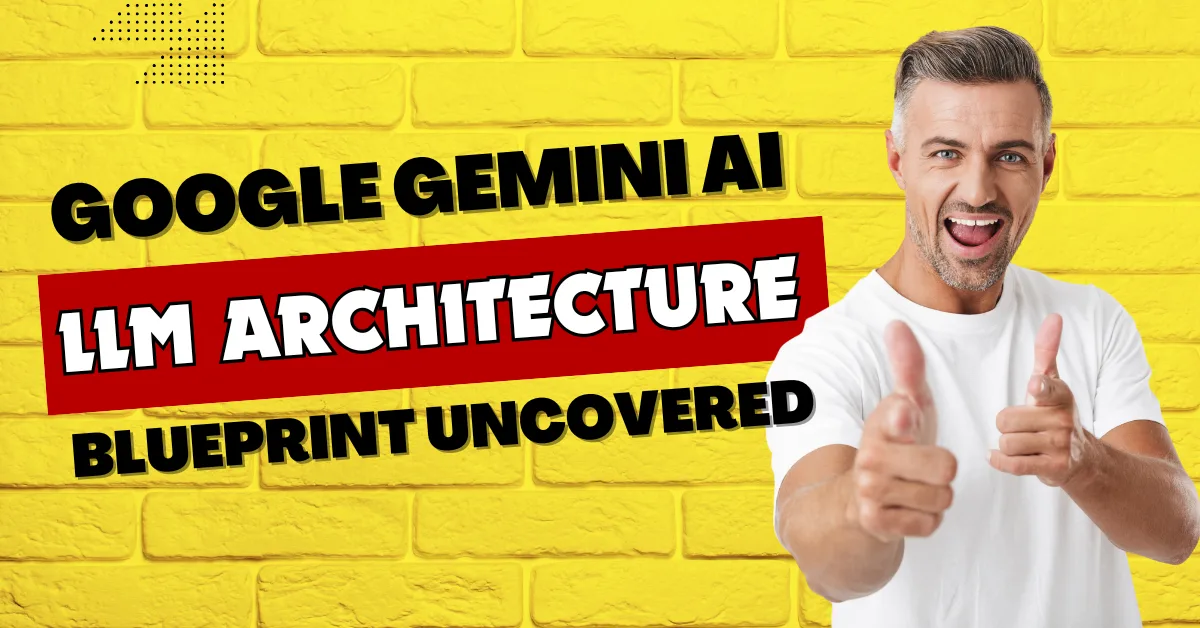
2 thoughts on “Powerful Google Gemini AI LLM Architecture Blueprint Uncovered 2025”